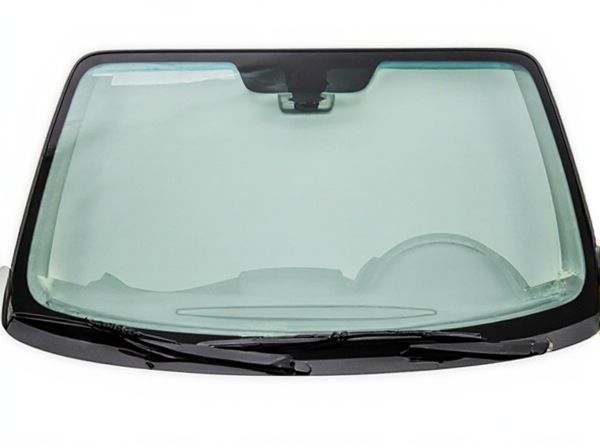
Photo illustration: OEM Windshield vs Aftermarket Windshield
OEM windshields are manufactured by the original vehicle maker, ensuring an exact fit and maintaining the integrity of your car's safety features. Aftermarket windshields may vary in quality and fit, often priced lower but potentially compromising structural strength and visibility. Choosing an OEM windshield guarantees compatibility with your vehicle's sensors and decals, preserving its resale value and performance.
Table of Comparison
| Feature | OEM Windshield | Aftermarket Windshield |
|---|---|---|
| Quality | Manufactured by original car maker; matches exact specifications | Produced by third-party manufacturers; varies in quality |
| Fit and Finish | Perfect fit; seamless integration with vehicle design | May require adjustments; risk of poor fit |
| Warranty | Typically covered by vehicle or manufacturer warranty | Warranty depends on supplier; often limited |
| Price | Higher cost due to brand and precision | Lower cost; more budget-friendly option |
| Safety and Durability | Meets strict OEM safety standards | Safety may vary; some meet industry standards |
| Availability | May take longer depending on model | Usually more readily available |
Introduction to OEM and Aftermarket Windshields
OEM windshields are manufactured by the original vehicle maker, ensuring precise fit, factory-quality materials, and compliance with safety standards specific to the car model. Aftermarket windshields are produced by third-party manufacturers and often vary in quality, pricing, and design, potentially affecting durability and visibility. Choosing between OEM and aftermarket windshields impacts vehicle performance, safety, and insurance coverage.
What is an OEM Windshield?
An OEM windshield is manufactured by the original equipment manufacturer specifically for a vehicle make and model, ensuring exact fit and compliance with factory safety standards. These windshields use high-quality glass and adhere to precise specifications set by the automaker, maintaining structural integrity and optimal visibility. Choosing an OEM windshield supports OEM warranty coverage and preserves the vehicle's resale value.
What is an Aftermarket Windshield?
An aftermarket windshield is a replacement glass manufactured by companies other than the original vehicle maker, designed to fit various car models accurately. These windshields often come at a lower cost compared to OEM (Original Equipment Manufacturer) windshields but may vary in quality, material, and warranty coverage. Choosing an aftermarket windshield requires careful consideration of factors like safety standards, durability, and compatibility with vehicle features such as rain sensors and heating elements.
Key Differences Between OEM and Aftermarket Windshields
OEM windshields are manufactured by the original vehicle maker, ensuring precise fit, material quality, and adherence to safety standards, which maintains the vehicle's structural integrity and factory warranty. Aftermarket windshields are produced by third-party suppliers, often at a lower cost, but may vary in glass composition, optical clarity, and fitment, increasing the risk of leaks, wind noise, or compromised safety performance. Choosing OEM windshields typically guarantees compatibility and durability, while aftermarket options provide budget-friendly alternatives with potential quality trade-offs.
Quality Comparison: OEM vs Aftermarket
OEM windshields are manufactured by the original vehicle maker or certified suppliers, ensuring precise fit, superior optical clarity, and use of high-grade laminated glass that meets strict safety standards. Aftermarket windshields vary widely in quality; lower-cost options may lack the exact curvature, clarity, and strength found in OEM parts, potentially compromising vehicle safety and durability. Research from the National Highway Traffic Safety Administration (NHTSA) highlights that OEM glass replacements generally maintain better adherence to manufacturer specifications, reducing risks associated with improper fitment and adhesion.
Safety Standards and Certifications
OEM windshields are manufactured by the original vehicle maker and strictly adhere to stringent safety standards and certifications such as DOT (Department of Transportation) and AS1 glass ratings, ensuring optimal fit, clarity, and impact resistance. Aftermarket windshields, while meeting basic safety regulations, may vary in quality and certification levels, sometimes lacking the precise engineering and material specifications of OEM parts. Choosing OEM windshields enhances vehicle safety by maintaining the integrity of airbags, structural support, and windshield wiper performance, which aftermarket options may not consistently guarantee.
Cost Analysis: OEM vs Aftermarket Windshields
OEM windshields typically cost 20-50% more than aftermarket windshields due to their original manufacturer specifications and guaranteed fit quality. Aftermarket windshields offer a more budget-friendly alternative, often priced 30-60% lower, but may vary in material quality and durability. Insurance coverage and long-term maintenance expenses should also be factored into the cost analysis when choosing between OEM and aftermarket options.
Compatibility and Vehicle Fit
OEM windshields are designed by the original vehicle manufacturer, ensuring precise compatibility and an exact fit tailored to the specific make and model. Aftermarket windshields vary in quality and dimensions, which can lead to potential issues with sealing, sensor alignment, and structural integrity. Proper fitment impacts safety features like airbags and advanced driver assistance systems, making OEM glass preferred for optimal vehicle performance.
Impact on Warranty and Insurance
OEM windshields, manufactured by the original vehicle maker, typically ensure full coverage under the car's warranty and align with insurance company requirements for repairs or replacements. Aftermarket windshields, produced by third-party suppliers, may not meet the stringent quality standards of OEM parts, potentially voiding warranty clauses related to glass damage and complicating insurance claims. Insurance providers often prefer OEM windshields due to their guaranteed fit and durability, which reduces the risk of future damages and claims disputes.
Choosing the Right Windshield for Your Car
Choosing the right windshield for your car involves understanding the differences between OEM and aftermarket options. OEM windshields provide precise fit, factory-grade materials, and retain the original safety features, ensuring optimal performance and durability. Aftermarket windshields offer cost-effective alternatives but may vary in quality, fit, and optical clarity, potentially impacting safety and comfort.
 caratoz.com
caratoz.com